

Investor blogs and podcasts
In Kesko’s investor blogs and podcasts, Kesko’s management discusses topical issues relevant to investors and shareholders.
It comes as no surprise to anyone that this has been a bizarre year: not only has it turned our lives upside down, it has also wreaked havoc on many businesses and the economy. Amidst all the uncertainty, many investors have viewed Kesko as a stable investment, reasoning, perhaps, that people will always need grocery stores for food. The share split we carried out in May also increased interest towards the share among private investors. Consequently, we have been thrilled to see the number of Kesko shareholders grow by nearly 14,000 in 2020!
The year has indeed been a strong one for our grocery trade: as food retail sales have grown, so have the market shares of our stores of all sizes. Growth has been particularly staggering online, where Kesko is the undisputed market leader in Finland with a 55% market share.
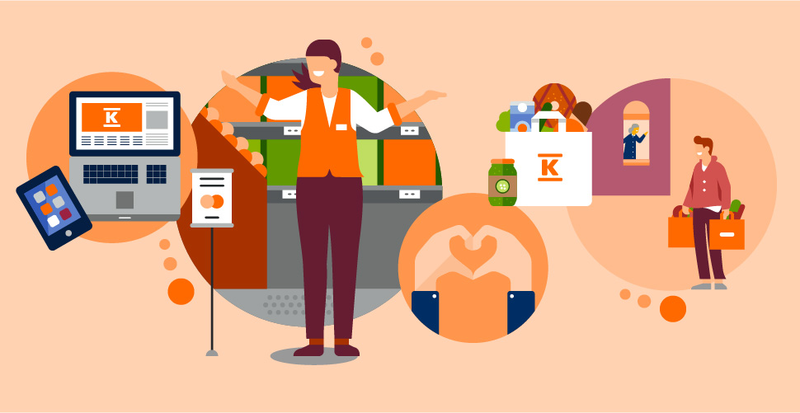
Our building and home improvement stores have also been busy, with people unable to travel turning their attention towards sprucing things up at home. However, some of Kesko’s businesses have been hurt by Covid-19: sales in our foodservice business have fallen due to restrictions imposed on restaurants and events. Our car trade suffered from availability issues and weak demand in the spring, although car sales did pick up in the latter half of the year. There are also some businesses that have remained fairly unaffected by the virus, such as B2B sales in our building and technical trade, which account for 70% of the whole division’s net sales.
All in all, 2020 has required a lot of work and effort from us, but has proved successful for Kesko, with our quarterly results beating one record after another. Despite the significant pandemic boost in some business areas, we estimated at our Capital Markets Day event in early December that less than half of our profit improvement in 2020 was attributable to Covid-19.
It's all about the strategy
One thing that remained constant this year was the foundation of our success, which continued to be our strong growth strategy. First established in 2015, our strategy has served us well and continued to do so also during this exceptional year. The strategy has led us to streamline our operations over the past five years, focusing on three core divisions under “one unified K” and carrying out more than 30 strategic acquisitions and divestments. As a result, the net sales of our core businesses have grown by over 3 billion euros since 2014. Our operating profit has improved steadily as well, and all the while, we have secured our cash flow and cost efficiency. Our strategy saw our market shares in Finland grow also in 2020 in grocery trade, foodservice, building and home improvement trade, and technical wholesale.
One day the virus will hopefully no longer dominate our every waking moment – what does that future look like for Kesko? We announced new medium-term financial targets at the beginning of December, as we were able to achieve the previous targets earlier in the autumn. Thus, we continue to see further room for growth and improvement.
When it comes to future success, we continue to rely on a familiar asset, our strategy. We want both our grocery and building and home improvement stores to adopt more widely store-specific business ideas that acknowledge local customer needs. We also want to improve customer experiences and the utilisation of customer data further.
In the grocery trade division, we will aim for even higher customer satisfaction, as we have seen how it correlates with higher sales. We will also strive to differentiate our grocery stores from the competition with products sold exclusively at K-stores and with our own brand products, which still account for a fairly low percentage of sales compared to our international peers. Eating out has been a growing trend for some time, and we expect that trend to continue and boost our foodservice sales once the pandemic has been defeated.
In the building and technical trade division, the total market in our eight operating countries amounts to 31 billion euros. The markets remain fragmented, and we therefore see potential for further growth and consolidation, especially in B2B trade in Sweden and Norway. Global megatrends such as urbanisation, energy-efficiency and the need to reduce emissions underpin the division going forward.
In the car trade division, our focus is on new products and services, such as electric cars, which are quickly growing in popularity. We will continue our good partnership with the world’s biggest car manufacturer the Volkswagen Group. Kesko’s car trade has a competitive dealership network and there is plenty of growth potential in the Finnish car trade market.
Kesko will also strive to reduce unit costs and improve cost efficiency further. This can be done with better utilisation of new technologies, increased use of automation, and by adopting more efficient processes. The challenges we have faced this year have forced us to re-examine our processes, and as a result, we have found many areas where we can improve also in upcoming years. Going forward, we will use investments to execute our growth strategy: in technology, in redesigning stores to improve customer experience further, and in acquisitions especially in the building and technical trade division.
We head into the future with a strong balance sheet that enables investments, acquisitions, and a good dividend capacity for investors who continue to believe in Kesko’s share.
We want to thank all our shareholders for this year. We will publish our 2020 financial statements release on 3 February 2021, and our Annual Report in March.
Click here to see the presentations from our Capital Markets Day event held on 2 December 2020.
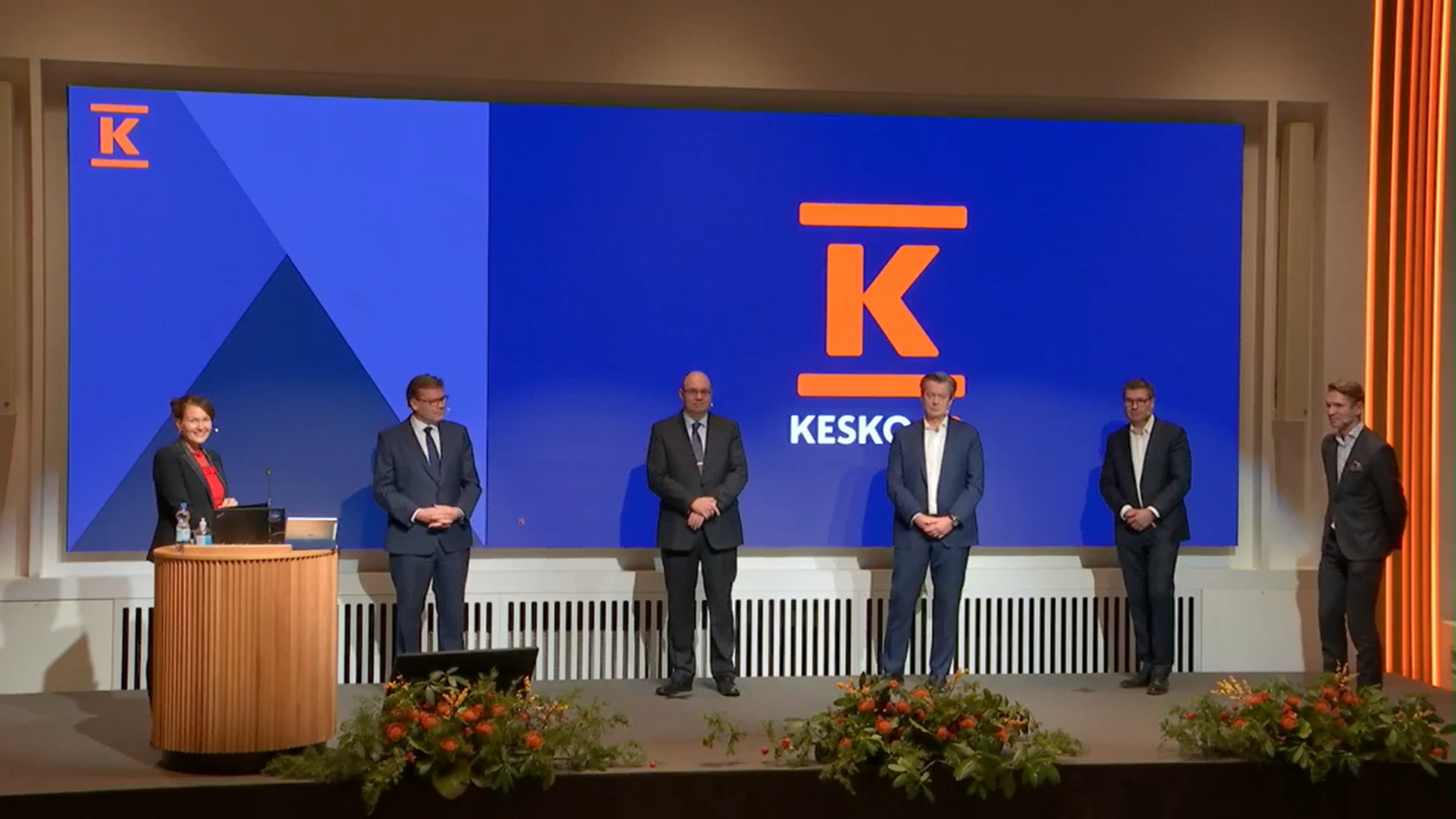
Kesko’s net sales grew in comparable terms in Q3, totalling €2,651.9 million, thus falling short of the consensus estimate of €2,672.9 million. Our comparable Q3 operating profit totalled €181.8 million, an increase of €38.2 million adjusting for the change in Kesko Senukai’s consolidation method (Kesko Senukai reported as a joint venture instead of a subsidiary as of 1 July 2020). The operating profit exceeded the market consensus expectation of €177.1 million.
The Q3 cash flow from operating activities totalled €286.6 million, and it grew by €95.0 million. We were also able to meet our long-term financial targets faster than we had anticipated.
Kesko specified its profit guidance for 2020. We now estimate that the comparable operating profit for continuing operations will be in the range of €530-570 million in 2020. Before, we had estimated that the comparable operating profit for continuing operations would be in the range of €510-570 million.
The Q3 release and presentation can be found here. Below, we answer frequently asked questions concerning Kesko’s Q3 results.
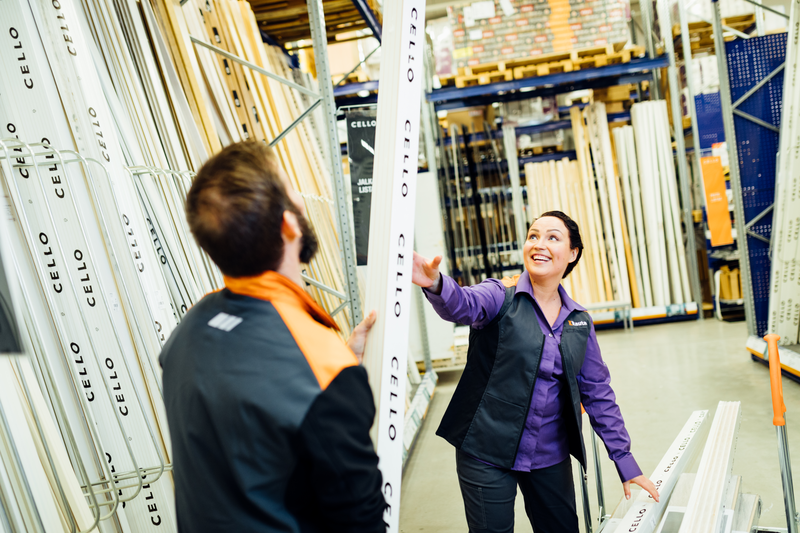
Q: Kesko issued a positive profit warning on 17 September, yet specified its profit guidance now. Has something changed since September?
A: The fact that we are closer to the end of the year makes it easier for us to specify the full-year estimate. The good Q3 results also make projections easier. We now estimate that the comparable operating profit for continuing operations will be in the range of €530-570 million in 2020, while in September we expected the figure to be in the range of €510-570 million.
Q: Have you continued the cost cuts announced earlier this year and have you identified long-term cost savings?
A: We carried out extensive adjustment measures in the spring and partly also in the summer, especially in the business areas that were most affected by the epidemic. Lately, there has been less need for such measures, but we have improved cost efficiency across the board, and some of the cost cuts will be permanent.
Q: How has Kesko prepared for competition now that Amazon has arrived in Sweden?
A: When in 2015 we formed our new strategy – which emphasises strong growth and focus on specific businesses – it was based on the understanding that competition will tighten. We saw that the best way for us to respond to the competition was to become even stronger. Our strategic choices are in part based on international online trade being the least active in areas where we, in turn, are growing.
Q: Are there interesting acquisition targets left on the market?
A: We see the biggest potential for growth in the building and technical trade division, where we have actively participated in sector consolidation in Northern Europe. In our view, growth will be based on strong development in Finland combined with further expansion abroad. We see plenty of potential and opportunities on this front, and we are constantly working on it in various operating countries.
Q: The market for B2B in the building and technical trade is showing signs of slowing down, how does that affect your customers?
A: There are big differences when it comes to the outlook for the construction markets in different areas and regions. We see the most positive outlooks for Infra construction and small-scale construction and renovation. These are areas where we are very strong. The weakest development will most likely be seen in the construction of new housing and shopping centres, but our role in this segment is less significant. Our position is good, as we have fared well against competition. The outlook for the construction market is uncertain, but we are fairly confident when it comes to the remainder of this year and next year, and we do not expect to see any major crash.
Q: Why was there such a significant drop in net sales for the speciality goods trade compared to the year before?
A: We divested our machinery trade operations, which were reported under speciality goods trade. The comparison figures for last year contained €52 million net sales for the machinery trade. Our remaining operations in the speciality goods trade’s leisure trade have fared well and we are very happy with profitability there.
Q: How does the political tension in Belarus affect Kesko Senukai’s operations and your negotiations with Kesko Senukai’s other main shareholder?
A: We have no problems in Belarus, our management there is very good: even under the current exceptional circumstances they have performed well. Our negotiations concern differences of opinion with Kesko Senukai’s other main shareholder, and our strategic review concerning our business operations in the Baltics and Belarus will continue as long as necessary.
IR Blog: Discussing the impacts of coronavirus and the construction market with President of the BTT division Jorma Rauhala
Building and technical trade is Kesko’s international arm, with operations in eight countries: Sweden, Norway, Poland, Estonia, Latvia, Lithuania, Belarus as well as Finland. The division serves both consumers and B2B customers, with total net sales some 4.4 billion euros when including the sales from leisure trade operations.
Kesko’s Vice President of Investor Relations Hanna Jaakkola sat down with the division’s President and Kesko’s Deputy CEO Jorma Rauhala to discuss what is happening on the building and technical trade markets.
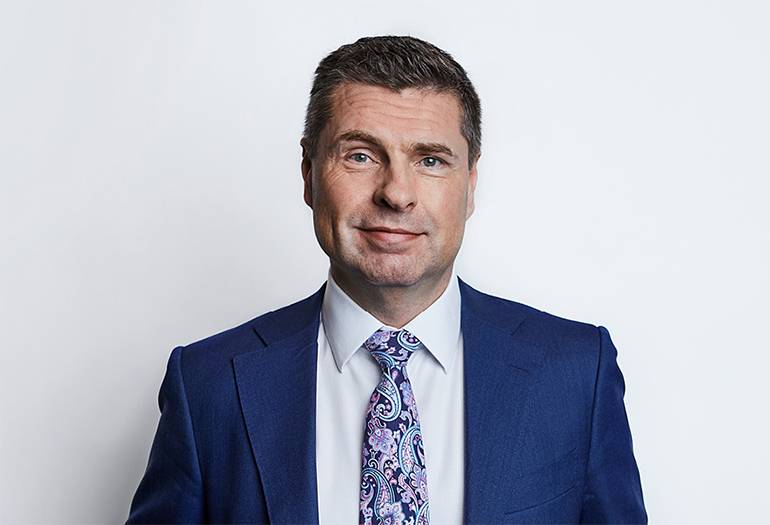 Hanna Jaakkola: Jorma, how has the coronavirus epidemic affected the building and technical trade division in Finland?
Hanna Jaakkola: Jorma, how has the coronavirus epidemic affected the building and technical trade division in Finland?
Jorma Rauhala: We began to see the impacts in mid-March. I remember we had a Group Management Board meeting on 12 March, and we started getting messages from our grocery trade retailers, saying store shelves were emptying out fast. For building and technical trade, there was no immediate impact.
We then saw a delayed positive impact in the form of an uptick in consumer sales in our building and home improvement stores. People were spending time at home and at their summer houses and were not travelling or eating out, so they began to do renovations and work on their gardens. In terms of consumer sales, this has been an extraordinarily good spring.
In B2B trade, which is very significant for us, it has been business as usual. We’ve haven’t seen any extra uptick, but also no downturn. So, spring was good for B2B in both building and home improvement trade and Onninen.
In leisure trade there was a fairly big change, as people stopped going to shopping malls. This had a negative impact on Kookenkä shoe stores and Intersport stores. However, from mid-April onwards and especially in May things have begun to return to normal, and we’ve even seen some good figures.
Hanna Jaakkola: What about other Nordic countries?
Jorma Rauhala: Developments in Norway and Sweden have been very similar to Finland. There has been a boom on the consumer side in both countries: we’ve broken sales records in K-rauta stores in Sweden and Byggmakker stores in Norway. Meanwhile, B2B sales in both countries are at their normal level. Overall, the impact has been positive for us.
Hanna Jaakkola: What has the impact been on the Baltics and Poland?
Jorma Rauhala: Well, in Lithuania, stores had to be closed for a month from mid-March onwards, and obviously that had a negative impact on sales, one that online sales could not compensate for. Now stores have been open in Lithuania for weeks.
In Estonia and Latvia, we’ve not seen as strong a boom in consumer sales as in the Nordics, although figures have been positive. B2B sales are showing some signs of slowing down. Still, apart from Lithuania, overall figures in the Baltics are quite good.
In Poland, we of course only engage in B2B through Onninen. Restrictions in Poland had an impact on construction activity, but not a major one, and things have begun to return to normal in Poland as well.
*
Hanna Jaakkola: Let’s turn our attention towards the future. Predictions by many economic research institutions are negative. How do you view market risks in our operations in Finland and the other operating countries?
Jorma Rauhala: I trust that consumer sales will continue to be good this summer, as people will be travelling less. Finns normally spend a total of 5 billion euros a year on foreign travel: now that they are staying home or at their summer houses, I believe people will continue to do renovations and tend their gardens, although eventually this activity will slow down.
B2B sales are still good, but I do expect the recession to start have an impact there come autumn. Based on various economic predictions, we’re anticipating a drop of 4% to 5% in construction in Finland next year. However, we do not expect renovation activity to decline as much, which is a positive for us. Renovation may even grow, as may infrastructure construction. That structure is positive for us. But it is clear construction will decline this autumn and next year.
Hanna Jaakkola: We have seen a surge in online sales in the grocery trade. Have online sales grown in BTT as well?
Jorma Rauhala: When it comes to online sales in our division, we must make a distinction between B2B customers and consumers. We’ve actually offered very good online shopping for B2B customers for years now. For example, the sales of Onninen’s Onnshop amount to hundreds of millions of euros. But it is just one order submission channel among many, and B2B customers seek flexible and functional systems for submitting orders and invoicing.
With consumers, we are talking about online shopping in a more common sense of the word. We’ve seen significant growth – online sales of K-Rauta in Finland have increased by over 100% – but not to the extent of the 800% growth rate seen in the grocery trade.
Most consumers compare the products online, then come to the store often already decided on what to buy. That makes online very important. People examine the products, then come to the store to see what their chosen colours and tiles look like in real life. But online sales are growing significantly, and in Finland we have a competitive advantage in our network of 130 stores, which can deliver the products anywhere in the country.
Hanna Jaakkola: Isn’t customer satisfaction high?
Jorma Rauhala: lt’s very high, even though online sales logistics and timely delivery for construction supplies is not that easy.
Hanna Jaakkola: The summer season is now in full swing in the building and technical trade.
Jorma Rauhala: Yes. It seems that the whole sector has done well, but of course we were able to take over market share significantly early in the year in Finland, both for K-Rauta and Onninen, and I believe that trend has continued. I’ve thought a lot about why that is, and I believe it has a lot to do with our supply chain, which has been very effective throughout. Our sales staff has been at work, our product availability has been exceptional, our logistics have run without a hitch – our entire supply chain has been performing excellently. The whole sector has done well, but we have done even better.
Hanna Jaakkola: Kesko’s strategy emphasises growth.
Jorma Rauhala: Yes, and that is especially true for the building and technical trade division, where we continue to seek growth, also internationally. Even during the epidemic, we are keeping an eye on various possibilities, including acquisitions. We are particularly looking to grow in B2B in Finland and especially in Sweden and Norway, also via acquisitions.
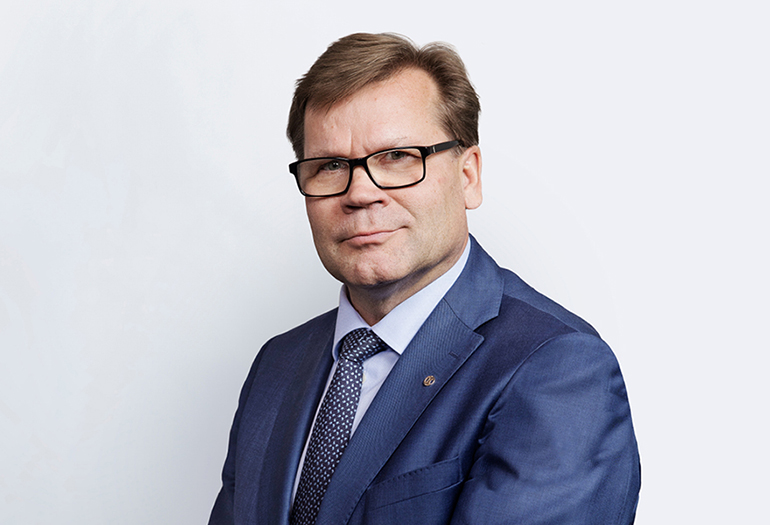
Hanna Jaakkola, Vice President, IR: Kesko recorded its all-time record result in 2019. What was the reason behind our success?
Mikko Helander, President and CEO: 2019 was indeed our all-time best year, and that is primarily thanks to the successful strategic choices we have made together, at both Group and division levels. Moreover, it was thanks to the exemplary implementation of those choices across Kesko and K Group.
Hanna: How did we succeed in strategy execution in our three divisions, the grocery trade, building and technical trade, and car trade?
Mikko: Good progress was seen in all our divisions. In the grocery trade, the good sales performance we’ve seen grew even stronger. Even better, the sales development and growth were also profitable. This is thanks to our successful strategic choices. I want to especially stress store-specific business ideas, which retailers have implemented with Kesko’s support.
In the building and technical trade, good development continued also in 2019. Sales grew and profit improved. Performance was strong particularly in Finland, where K-Rauta broke records and Onninen’s performance continued strong. In terms of strategy, the successful acquisitions carried out in Sweden and Norway have of course been very important, and have strengthened our position in those countries.
I must once again applaud our car trade division, which in an exceptionally challenging market situation still managed to maintain good profitability, and carried out strategically important acquisitions and measures to ensure competitiveness.
Thus all three divisions performed very well.
Hanna: Those were good examples of our success, but is there something else you would like to stress, something you are particularly proud of?
Mikko: There are many such things. Overall, I am pleased and we should all be proud of our ability do and develop our business though our strategies, and read the operating environment and make strategic choices. We at K Group, that is Kesko together with K-retailers, are great at implementing in close collaboration plans and things we’ve agreed on. This gives me hope and faith also going forward.
Hanna: So we’ve had wind in our sails and have moved forward. But what has been the most challenging part of our strategy execution?
Mikko: Whenever managing a business, especially a company of this size, the most challenging aspect – but also a very interesting one – are the strategic choices. How well we are able to read the operating environment and assess changes, and make successful strategic choices based on that. As I said, that is challenging, but also very interesting. And as the results show, we are good at this.
Hanna: Sustainability and combatting climate change have an important role in Kesko. What does this mean in practice?
Mikko: Sustainability and combatting climate change are increasingly crucial strategic focus areas for us. This means even greater commitment to our successful long-term sustainability work. We will also share our bigger and smaller sustainability efforts more with the public and our customers. Our sustainability work and climate efforts must be made visible and tangible in all K Group’s operations, especially all our 1,800 stores in Northern Europe.
Hanna: What threats and opportunities do you see in our operating environment?
Mikko: In terms of the future and our operating environment, I want to emphasise the opportunities. If we think of the type of company Kesko is, our good financial position and our results, I see interesting opportunities for us in the future.
Of course, there are always threats as well. However, we can use the same strengths – the ability to read the operating environment and make and determinately execute the right choices. I firmly believe that executing our existing strategies is the best way to ensure our success amidst tightening competition also going forward.
Hanna: How do you see the future? Can Kesko and K Group continue their success?
Mikko: When it comes to the future of Kesko and K Group, these days I’m often asked how much more we can still improve our operations, both as a whole and at division level. To that I say ”significantly”. Our actions so far have proven effective. Our strategic choices have been right. By implementing these even more determinedly, I am sure we can reach even better figures, both commercially and financially. So the future looks bright, and it won’t be boring.